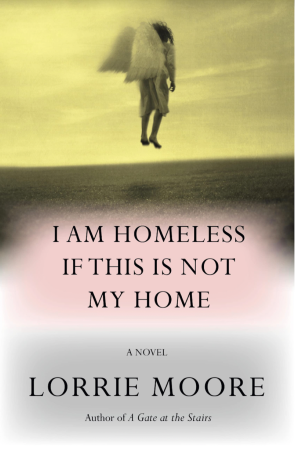Book Review | ‘I Am Homeless if This Is Not My Home’ by Lorrie Moore
A Highly Readable Effort from One of America’s Greatest Living Authors


Early in Lorrie Moore’s new novel I Am Homeless if This Is Not My Home, the protagonist, Finn, notes that while white schizophrenics are allowed relative freedom in New York, “black schizophrenics huddled under blankets and cardboard on sidewalks against the façades of skyscrapers. Pieces of paper rolled into jars with scrawled writing facing outward: I am not homeless. This is my home.” It’s the only time in the book the unusual title is ever specifically referenced, and, of course, the title itself is slightly more mysterious and open-ended. That moment soon flashes past in the cavalcade of Moore’s narrative, but it turns out to be something of a touchstone for the central characters, none of whom ever seem completely at home as living creatures on planet Earth.
In addition to Finn, a conspiracy-minded, left-leaning private high school teacher who has been suspended, he claims, for not responding to the sexual advances of the headmaster’s wife, there is his brother Max, a gentle and generous man dying a painful death in a New York hospice. Max has had a silver tooth all his life because when he lost it in a childhood bicycle accident, his mother was unwilling to spend money on him: She “had been saving money from their cop father’s paycheck for her own orthodontia … on her slightly buck teeth.” Max, however, is “a forever-pirate on the ship of life and had somehow accepted it,” just as he accepted everything else. The 40 or so pages the novel spends on the brothers’ last days together is moving, if ultimately unresolved, and slightly heavy on the repartee.
When it comes to banter, though, no one in the novel can do it like Lily, Finn’s great love, a woman who left him a year earlier, but about whom he thinks constantly. However, Finn faces a much greater problem than Lily running off with another man, Jack (more on his name later). She is desperately and assiduously intent on being dead, a feat she accomplishes fairly early in the novel. Not to worry, though: Her “death-adjacent” corpse is Finn’s lively companion for most of the book. That plot twist might sound worrying for those who like their literature, well, literary. If any genre seems played out, across all genres, it’s zombies. Yet I Am Homeless if This Is Not My Home is essentially a zombie road trip novel.
As Finn drives Lily from the “green” cemetery in Illinois where she has been buried, immediately after death and with no chemical preservatives, to the forensic “body farm” in Tennessee where she wants to be buried, the two lovers kiss, engage in oral sex, and talk, talk, talk about each other and their doomed relationship. In lesser hands, all this badinage might grow tiresome, but Moore offers a masterclass on dialogue-writing, making use of, as Amy Bloom once put it, “conversation’s greatest hits,” while leavening the chat with clever commentary — most of it from Finn’s point of view — and vivid, inventive details. Much of the description pertains to Lily’s steadily dissolving corporeal self: “Her torso had begun to leak and swell…. There was a spot of bruisey yellow beneath her chin as if she were holding up a buttercup to see if she liked butter. But without the buttercup.”
Toward the end, as Finn becomes increasingly desperate in his attempts to hold onto Lily, I couldn’t help hearing the voice of Seinfeld’s George Constanza in one of his comic rages: “You have smashed my life to bits! Look! Everything is at your convenience!” Lily’s reply is a bit salty for late-’90s network television, but you can still hear Seinfeldian echoes: “Finn! For God’s sake! Don’t be a dick!”
The book begins and is interspersed with letters from Elizabeth, the owner of a 19th-century boardinghouse, to her deceased sister, and this story strand will leave some readers (I raise my hand) deeply puzzled. Granted, Finn discovers, and absconds with, the letters when he finds them in that same boardinghouse a hundred years later, but why are they so important to his story? Elizabeth is being wooed by a smooth-talking Southerner with an intimate knowledge of the theater whose name is Jack. Is he a parallel to the Jack who took Lily away from Finn? Is Jack really Lincoln’s assassin, John Wilkes Booth, whom, in a conversation with Max, Finn suspects of having escaped capture and death? Is Ofelia, Elizabeth’s African American cook and housekeeper, somehow related to the homeless man of the title? If so, what is the commentary on race in this novel where most of the characters are pretty white — or, in Lily’s case, green? No doubt, there’s a key, but the parallels seem strained.
Critics will find it tempting to read I Am Homeless if This Is Not My Home in conjunction with Moore’s stories, which are more renowned than her four novels. Indeed, some reviewers seem primarily interested in using the long fiction to explain the short. However, the novel, for all its weirdnesses, or maybe because of them, is a worthy and highly readable effort from one of America’s greatest living authors.
This review originally appeared in the California Review of Books.




You must be logged in to post a comment.